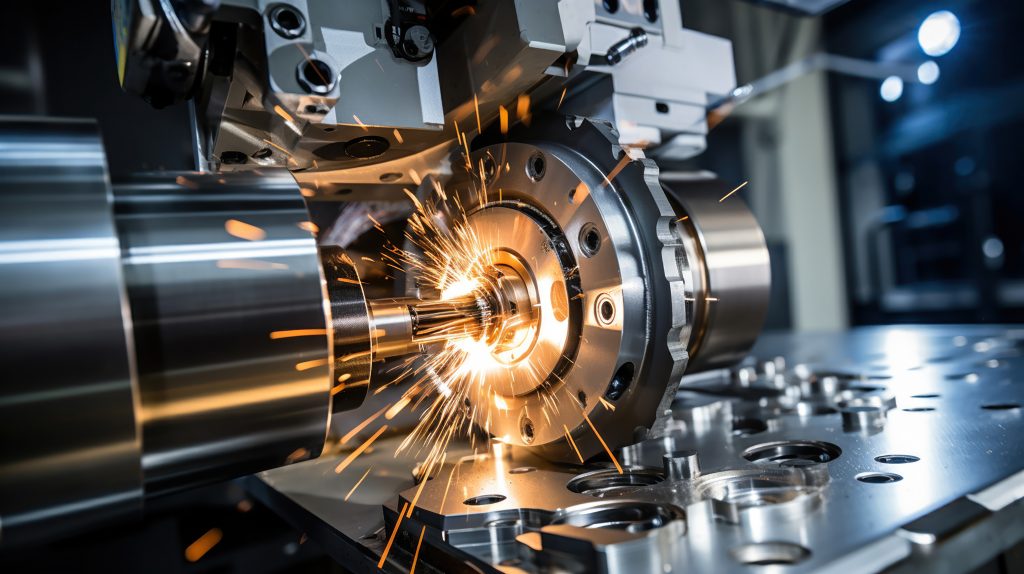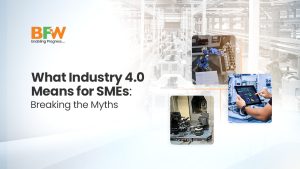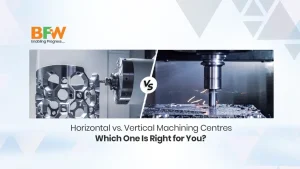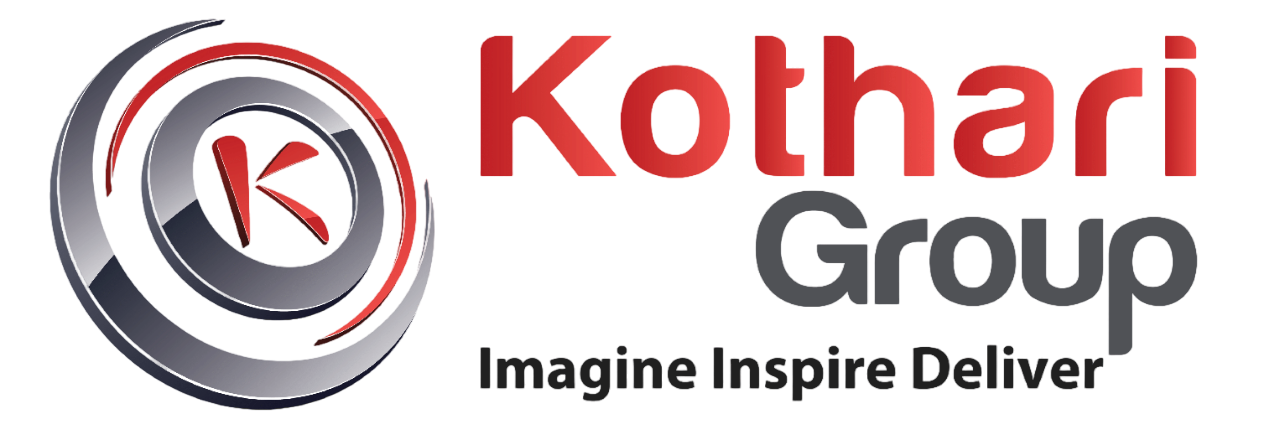Understanding the distinctions between CNC and VMC machines is crucial for anyone involved in the manufacturing and machining industries. While both CNC and VMC technologies are fundamental to modern precision machining, they serve different purposes and offer unique advantages. This article explores the key differences between these two technologies, delving into their definition, scope, orientation, functionality, design, applications, and versatility. By the end, you’ll have a clearer understanding of how CNC and VMC machines can be leveraged to enhance efficiency and precision in various machining tasks.
What is CNC?
CNC stands for Computer Numerical Control, a technology that automates the operation of machine tools through precisely programmed commands encoded on a computer. This system replaces manual control with computer-aided control, enhancing the precision, efficiency, and repeatability of machining processes. CNC machines, which include lathes, mills, routers, and grinders, operate by following a coded program that dictates the movements and operations of the tool and the workpiece. This technology allows for intricate and complex shapes to be produced with high accuracy, as the machine can perform multiple operations in a single setup without manual intervention. The use of CNC technology minimizes human error, reduces waste, and increases production speed. Additionally, CNC machines are capable of running 24/7 with minimal supervision, significantly boosting manufacturing productivity. The programmability of CNC machines also enables quick adjustments and adaptations to different parts and designs, providing a high level of flexibility in manufacturing processes.
What is a VMC machine?
VMC stands for Vertical Machining Center, a type of CNC machine characterized by its vertically oriented spindle. This design allows for straightforward access to the workpiece and enhances visibility, which is crucial for precise operations. The vertical orientation makes it easier to clamp and secure parts, facilitating stable and accurate machining. VMCs excel in performing various tasks such as milling, drilling, boring, and tapping with high precision due to their advanced control systems and robust construction. The vertical setup also simplifies chip removal, improving the overall efficiency of the machining process. Additionally, VMCs typically offer a smaller footprint compared to horizontal machines, making them an efficient choice for many manufacturing environments. The ease of programming and automation capabilities of VMCs contribute to reduced setup times and increased productivity, making them a valuable asset in precision machining.
Difference between CNC and VMC machines
CNC and are related but distinct concepts in the field of machining. Here are the key differences between them
Scope:
- CNC: CNC technology encompasses all types of machine tools and equipment that are controlled by computer programs. This includes a wide range of machinery such as lathes (for turning operations), routers (for cutting various materials including wood and plastic), mills (both vertical and horizontal for various milling tasks), grinders (for precision grinding), plasma cutters (for cutting through metal with plasma), and more. Essentially, any machine tool that can be controlled by a computer program falls under the CNC category, enabling complex and precise operations across different materials and shapes.
- VMC: Refers specifically to CNC milling machines with a vertical spindle orientation. These machines are designed for vertical milling operations, where the spindle moves vertically along the Z-axis while the workpiece remains stationary on a fixed table. The scope of VMCs is limited to tasks that benefit from this vertical setup, primarily involving precise vertical cuts and milling operations.
Orientation:
- CNC: The term CNC does not specify the orientation of the machine or spindle. CNC machines can have spindles oriented both vertically and horizontally. For example, CNC lathes typically have horizontal spindles, while CNC mills can have either vertical or horizontal spindles. This flexibility allows CNC technology to be applied to a diverse array of machines, each designed to perform specific tasks with high precision and efficiency.
- VMC: Always features a vertically oriented spindle. This design is particularly suitable for tasks requiring downward forces and vertical cutting paths, such as drilling holes or making vertical cuts. The vertical orientation allows for easy access to the workpiece, better visibility during operations, and effective chip removal, which enhances the overall machining process.
Functionality:
- CNC: CNC machines can perform a wide variety of tasks depending on their specific type and configuration. These tasks include cutting (e.g., laser cutting, plasma cutting), milling (e.g., producing complex shapes and surfaces), drilling (e.g., creating holes of various sizes and depths), turning (e.g., shaping materials on a lathe), grinding (e.g., achieving precise surface finishes), and more. The ability to program complex sequences of operations allows CNC machines to handle intricate designs and produce consistent, high-quality results.
- VMC: Primarily used for milling, drilling, boring, and tapping operations. The vertical spindle orientation is ideal for these tasks, allowing for precise control and efficient material removal. VMCs focus on the precision and efficiency of vertical machining tasks, making them well-suited for producing parts with complex geometries and detailed features.
Design and Structure:
- CNC: CNC machines can vary significantly in design based on their specific functions. For example, CNC lathes have a horizontal spindle and are used for turning operations, while CNC routers have various configurations to cut materials like wood, plastic, and metal. Each type of CNC machine is designed to perform a particular set of operations, with structures optimized for those tasks. The diversity in design allows CNC machines to be tailored to specific manufacturing needs.
- VMC: Typically features a fixed table and a vertical spindle. The spindle moves in the X, Y, and Z axes to perform machining operations, while the workpiece remains stationary on the table. This design provides stability and precision, allowing for accurate vertical cuts and efficient material removal. The VMC structure is optimized for tasks that benefit from vertical machining, such as milling intricate parts and creating detailed features.
Applications:
- CNC: Broadly applicable across numerous industries and applications. CNC machines are capable of handling a wide range of materials, including metals, plastics, wood, and composites. They are used in industries such as aerospace (for precision components), automotive (for engine parts and body components), medical (for surgical instruments and implants), electronics (for circuit boards and enclosures), and more. The ability to program and automate complex operations makes CNC machines essential for modern manufacturing.
- VMC: Often used in applications requiring precise vertical cuts and operations. This includes the production of intricate parts with detailed features, such as molds and dies, components for the aerospace and automotive industries, and precision parts for medical devices. The vertical spindle orientation and precise control of VMCs make them ideal for tasks that demand high accuracy and fine detail.
Versatility:
- CNC: Extremely versatile, as it applies to any machine tool that is computer-controlled. CNC technology can be adapted to a wide variety of machines, each capable of performing different types of operations. This versatility allows manufacturers to use CNC machines for a broad range of applications, from simple cutting and drilling to complex 3D shaping and multi-axis machining.
- VMC: More specialized, focusing on the benefits of vertical machining for specific types of parts and operations. While VMCs are versatile within the realm of vertical machining tasks, their specialization in vertical spindle orientation means they are particularly effective for operations that benefit from this setup. This specialization allows VMCs to excel in producing precise, detailed parts with high efficiency.
Conclusion
CNC technology represents a broad category of computer-controlled machining tools, offering unparalleled versatility and precision across a wide range of applications. VMCs, as a specific type of CNC machine, provide specialized capabilities for vertical milling operations, making them indispensable for tasks requiring intricate detail and accuracy. Both technologies play vital roles in modern manufacturing, each contributing unique strengths to the production process. By comprehending the differences between CNC and VMC machines, manufacturers can better select the appropriate technology to meet their specific machining needs and achieve optimal results.










